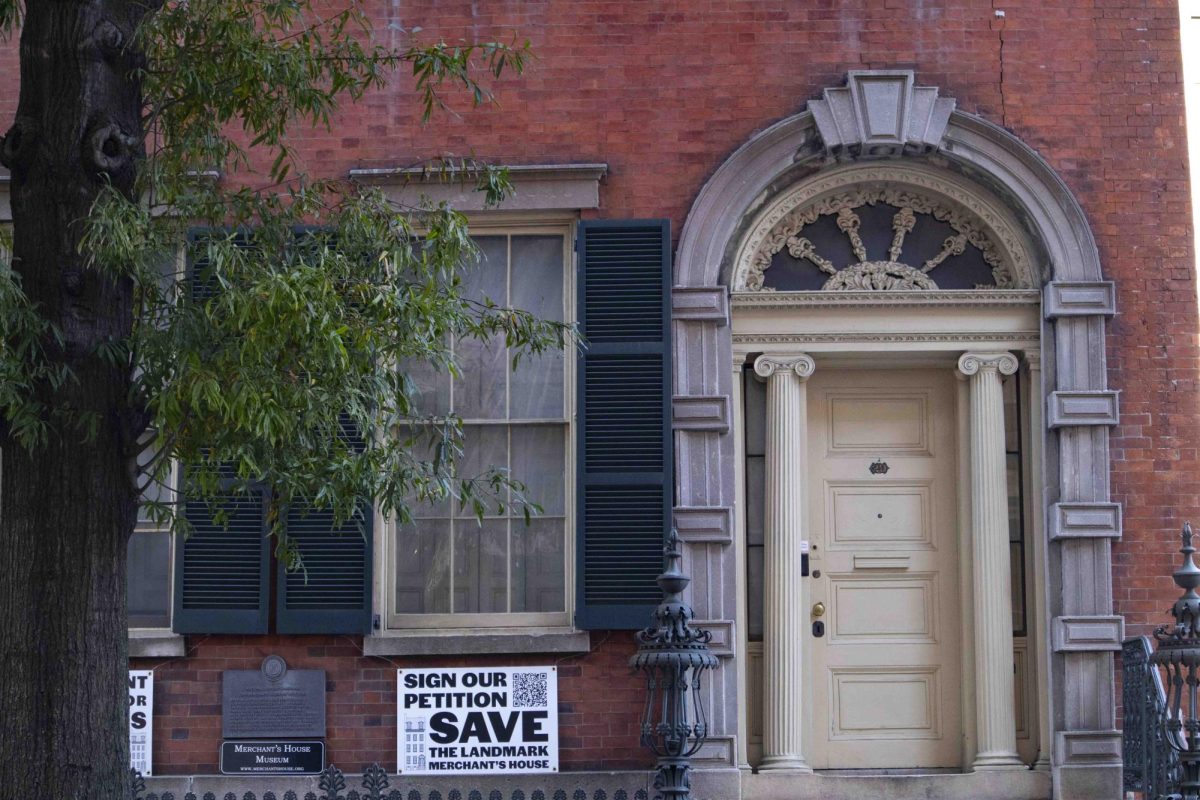In 1835, a merchant joined Manhattan’s wealthiest in a migration to NoHo and bought a row house on East Fourth Street, where he lived with his wife and eight children. The building was home to his family for nearly 100 years, until the youngest died in 1933 and a distant relative turned the house into a museum. The exhibition’s preserved furniture, clothing and plaster walls portray the everyday life of an affluent family living in 19th-century New York City.
Now, New Yorkers are fighting to prevent a nextdoor construction project that would cause “irreparable damage” and force the Merchant’s House Museum to shut down for at least two years.
The Landmarks Preservation Commission — the city agency responsible for preserving historical buildings — approved development plans for the neighboring lot in December 2023. The authorization came after over a decade of debate between the lot’s developer, the museum and the city.
The museum has since called on community members to send letters to New York City Hall advocating to stall the development, citing concerns that its 192-year-old plaster would be at risk due to vibrations from the nearby construction of a hotel or office building.
The LPC’s approval was contingent on the developer — Kalodop II Park Corporation — complying with certain requirements, including working with an expert to monitor and report vibrations of the construction project. Advocates for the museum have said this would not be effective because developers are not able to report until the vibrations caused irreversible damage.
The Merchant’s House Executive Director Margaret Gardiner said that she is worried that the vibrations could collapse the ceiling and damage the original furniture inside. In preparation, museum employees plan to transfer the interior collection into storage and temporarily close the museum, which will cost an estimated $5 million. Gardiner said she had been trying to come up with an alternative plan, but was unsuccessful in finding a preventative solution.
“We’re not against development,” Gardiner said in an interview with WSN. “It’s the growth of a city, but if it’s going to be next to a building as important as the Merchant’s House, there needs to be some sort of guardrails.”
In 1965, the row house became Manhattan’s first landmarked building, and was one of the first spaces to be landmarked in New York state. Andrew Berman, the executive director of Village Preservation, said that while he was grateful that the guidelines on vibrations had been established to honor the building’s landmark status, he doubts they will take effect. He said he had seen similar rules established by the LPC and Department of Buildings, but they were often “poorly enforced and not adhered to.”
“You can have the best system possible, but if it’s not adhered to, and it’s not rigidly enforced, that’s not going to work,” Berman said. “Based on our experiences with the city, that’s our concern.”
The LPC and the City Planning Commission initially approved the development plans in 2014, but the initiative was halted after the City Council denied the Kalodop II Park Corporation’s application to surpass zoning laws in 2018. Because of updated zoning laws, its most recent development plan does not require the council’s approval.
Michael Devonshire, an LPC Commissioner and current member of the New York State Board for Historic Preservation, said that the Merchant’s House case shows an area where LPC lacks authority in a statement to WSN. He said that while the agency can restrict how an existing building renovates its space, it cannot halt nearby construction.
“What is the point of the Landmarks Preservation Commission if they’re not going to protect the Merchant’s House Museum?” Gardiner said. “To me and a lot of others, what it says is that no landmark, no historic building in the city is safe.”
More than 10,000 people have sent letters to City Hall demanding that New York City’s Department of Buildings intervene with the proposed construction process, and the building is taking donations to support its legal battle. In interviews with WSN, museumgoers said they were saddened by the building’s potential closure because of its unique approach to local history.
“It is such an intentional process to preserve something — it takes so much effort and so much care,” resident Anne Comer said. “It would be really heartbreaking to see this place disappear for two years.”
Contact Emma Grimes at [email protected].






















































































































































